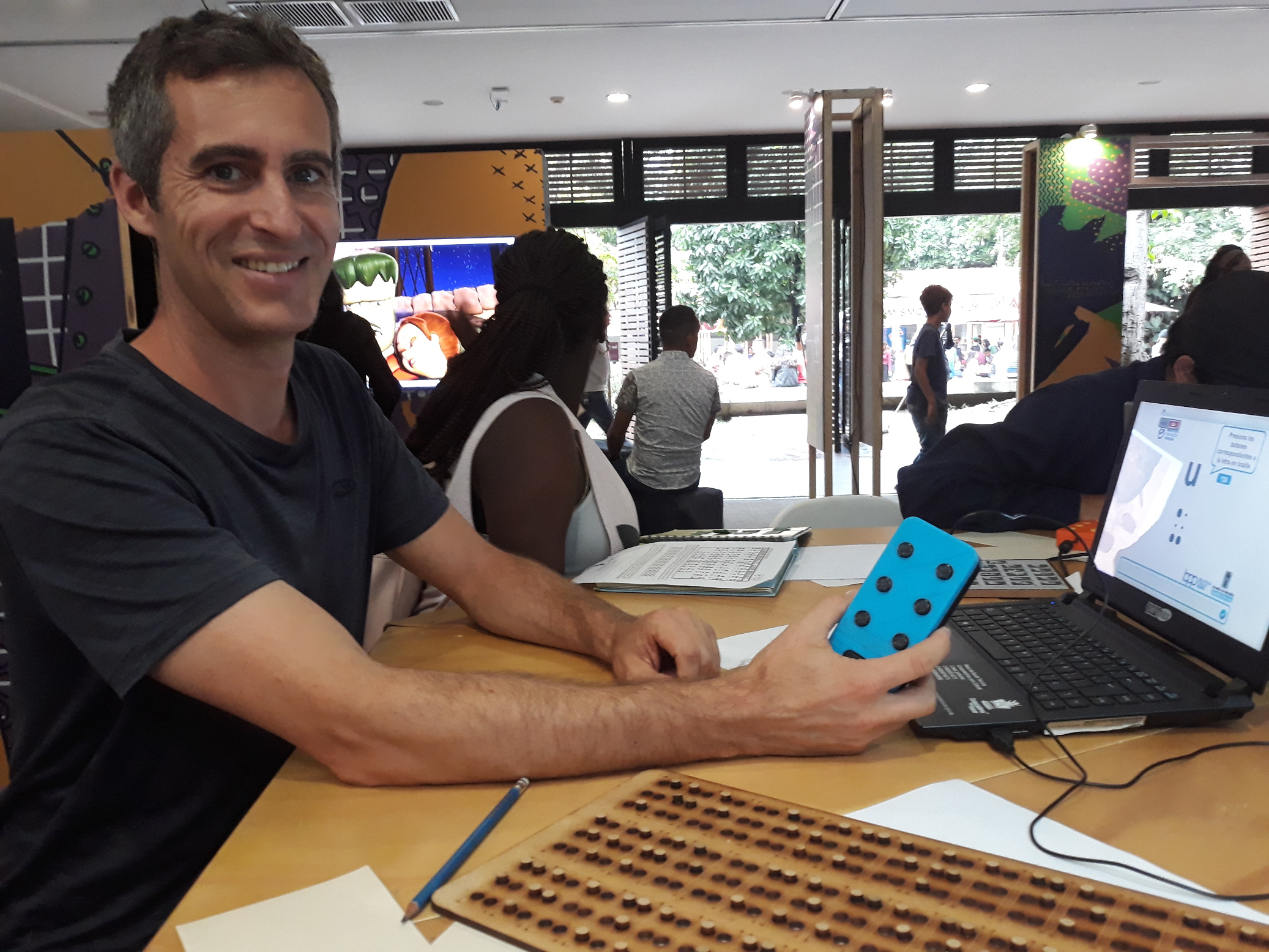When I decided to move to Latin America, it was my plan to find a way to contribute to my chosen community. While I wasn’t arrogant enough to think that I could do everything better than people in less developed countries, but I had forgotten how much I can learn from them. For example, libraries in Medellin are more than just a place for reading. They’ve become hubs that transform the community, with buildings of architectural interest, parks, auditoriums, computer learning labs and a few books.
For the past month I’ve been volunteering with the Experimental Technologies Group, part of Bibliolabs, at the Libraries in Medellin. I came in at the tail end of a project to build a device for teaching people how to read / write braille. There was no need to design it from scratch when they could modify something from the open source world, such as a braille keyboard for smart phones, but finding parts that can be used locally is a lot of work in itself.
The team had 3D-printed the chassis with buttons and were working on the circuit and coding when I joined them. I was assigned the task of understanding how a keyboard works so the same logic could be applied to detecting button presses on the device. I also kept an eye (my ears weren’t as much help as usual when all conversation was in local slang) on the coding design and noticed a couple of problems.
The most significant was that their code required the buttons to be pressed in the order they decided. The letter ‘c’ is denoted by the two dots in the top row. If the learner pressed the top left (button 1) then the top right (button 4), the program would identify it correctly as ‘c’. However, if the learner pressed button 4 before button 1, the program would claim the response was incorrect.
It was an ordeal to explain my concerns in Spanish, but over a couple of weeks I managed. One of the senior guys, possibly having independently identified the problem, suggested an efficient solution, and I took it upon myself to implement it using their chosen coding platform – Scratch. It took me a few iterations and some feedback from the primary coder in the team to get it right, but the result was ready in time for a demonstration at the Festival of Books and Culture last weekend.
Sandra joined me to see what I’d been working on and met the team. They were manning a table busy with people interested in learning how this braille thing worked. The team had put together a braille peg board with a message that could be decoded using our device, as well as having an actual braille embossing tool so that people could have a go at writing their names. It was so popular that I barely managed to get a turn for long enough to take a photo.
Our work can now be reproduced and made available at every library. Sandra could see application for schools as well – where it would even benefit sighted children to empathise with blind people they encounter through life.
Our next challenge will be to build a prototype braille printer. I’m excited to be involved from the beginning on this project, and expect to learn even more.
